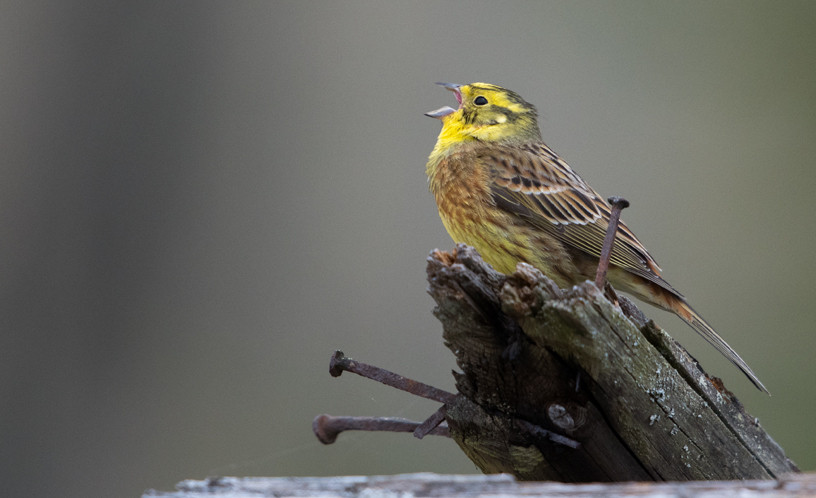Descrição
Backgården is an area of open fields fields that border the lake of Stora Aspen. In the spring, not only many migrating birds fly over but there is a chance to see many kinds of geese, as well as Tartaranhão-azulado, Escrevedeira-das-neves, Escrevedeira da Lapónia, Esmerilhão, Pintarroxo-de-bico-amarelo, Melro-de-peito-branco, Maçarico-galego and also different kinds of ducks can be seen with a little luck (Merganso-pequeno, Pato-trombeteiro, Frisada and Piadeira). Common species during the summer are Pato-olho-d'ouro, Mobêlha-árctica, Mobêlha-pequena, Andorinha-do-mar-comum, Gaivota-parda, Gaivota-argêntea, Cartaxo-nortenho, Abibe-comum, Corvo-marinho-de-faces-brancas, Águia-rabalva, Águia-pesqueira, peneireiro-de-dorso-malhado / peneireiro and Maçarico-real.
Waders like Narceja-comum, Maçarico-bastardo and Pássaro-bique-bique are usually seen in the marsh. In winter, there is a bird feed that often has a lot of Escrevedeira-amarela (which are also stationary in summer). Also Dom-fafe, Verdilhão-comum, Pintassilgo, Chapim-palustre, Gaio-comum, Chapim-azul, chapim-real, Tentilhão-montês and Trepadeira-azul to name a few have been seen at the feeding place in winter. If you are lucky, there is a chance of several kinds of woodpeckers. At the feeding site Pica-pau-malhado-grande is a frequent visitor in winter (it is common there all year round). Pica-pau-verde and Pica-pau-preto are on site all year round (but mainly spring, summer and autumn) and are discovered mainly through their sounds.
Pica-pau-malhado-pequeno, Torcicolo and Pica-pau-cinzento have also been observed at the site. During summer nights, you may be lucky enough to hear some species. Coruja-do-mato sometimes calls, in some years Codornizão is on the arable land and in the wetland there is a chance for various night songbirds, such as Felosa-malhada, Felosa-dos-juncos and Rouxinol-russo. Narceja-comum is a common species here that is usually noisy after sunset. As it is a bit down to the water, you may need to walk over the grass to be able to listen for night owls properly. The grass is quite tall and usually damp at night, so waterproof shoes are good to have. Please avoid walking on cultivated land.
Detalhes
Acesso
The easiest way to get here is by car. Parking is on the left side of the road near the bird tower. (GPS for parking: (lat, lon): 59.959438, 15.859923 or click on the P in the map to get directions to the parking.) The bird tower is clearly visible from the parking lot. The area is best experienced by exploring the area on foot and going out to the bird tower.
Terreno e Habitat
Terras húmidas , Árvores e arbustos dispersos , Agricultura , Camas de junco , LagoCondições
Plano , Paisagem abertaCaminho circular
Nãoé útil um telescópio?
SimBoa temporada de observação de aves
PrimaveraMelhor hora para visitar
PrimaveraRota
Estrada não pavimentadaCaminho dificil
FácilAcessível por
Cadeira de rodas , PéAbrigo/plataforma deobservação de aves
SimInformação extra
In the tower there is a notebook in a mailbox upstairs. There you can read previous observations and report your own. The bird feeding is best viewed from the tower, then no binoculars are needed.



